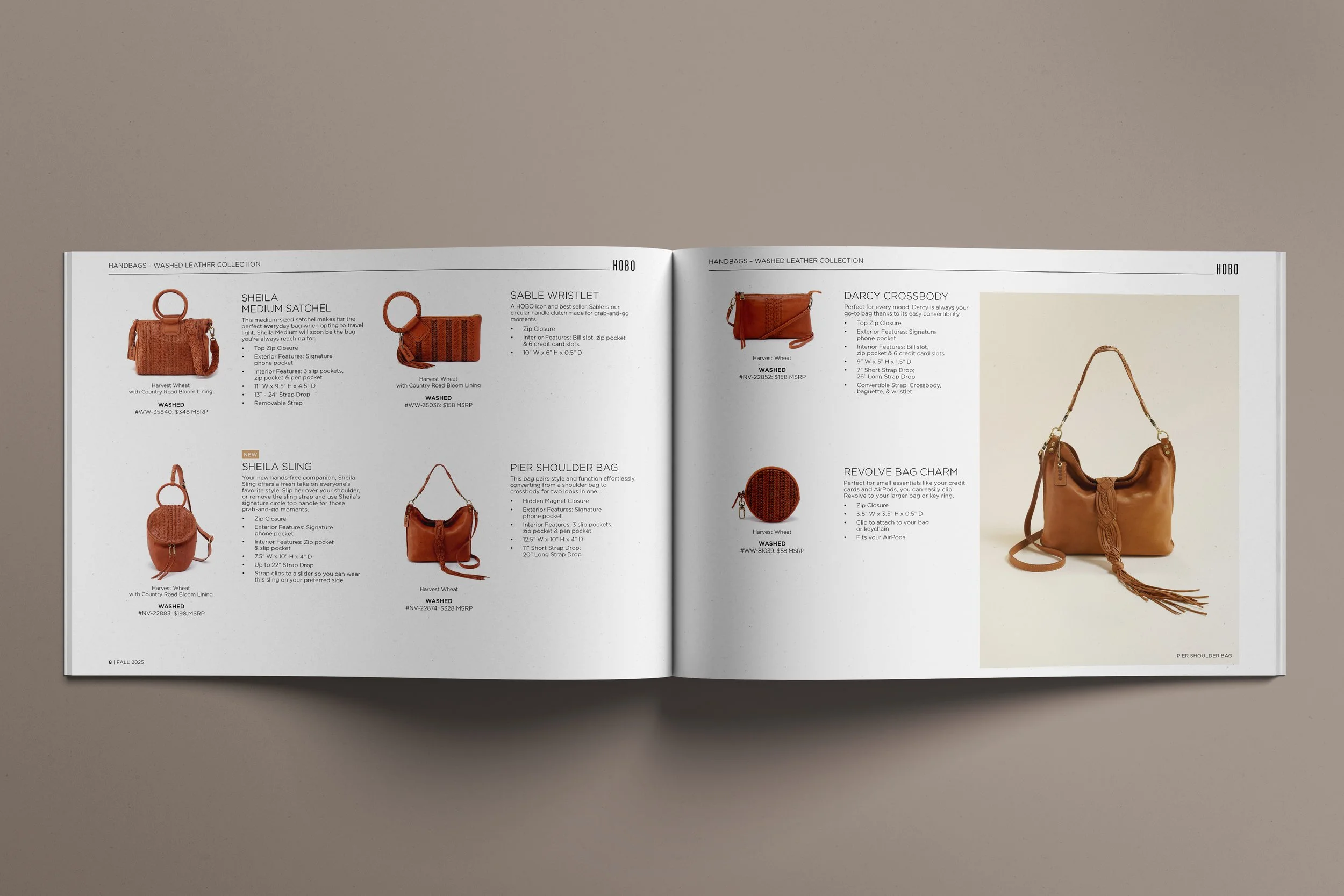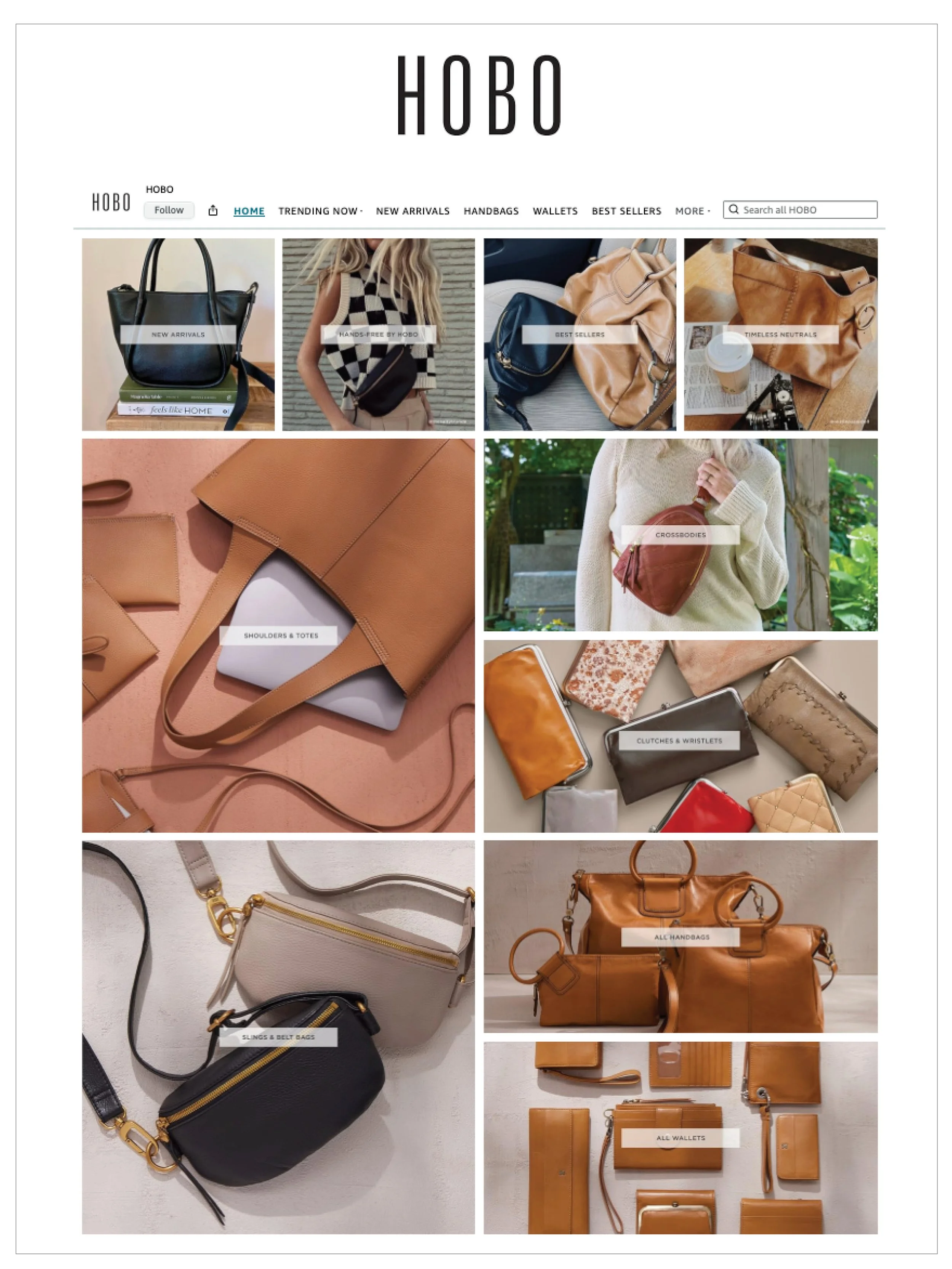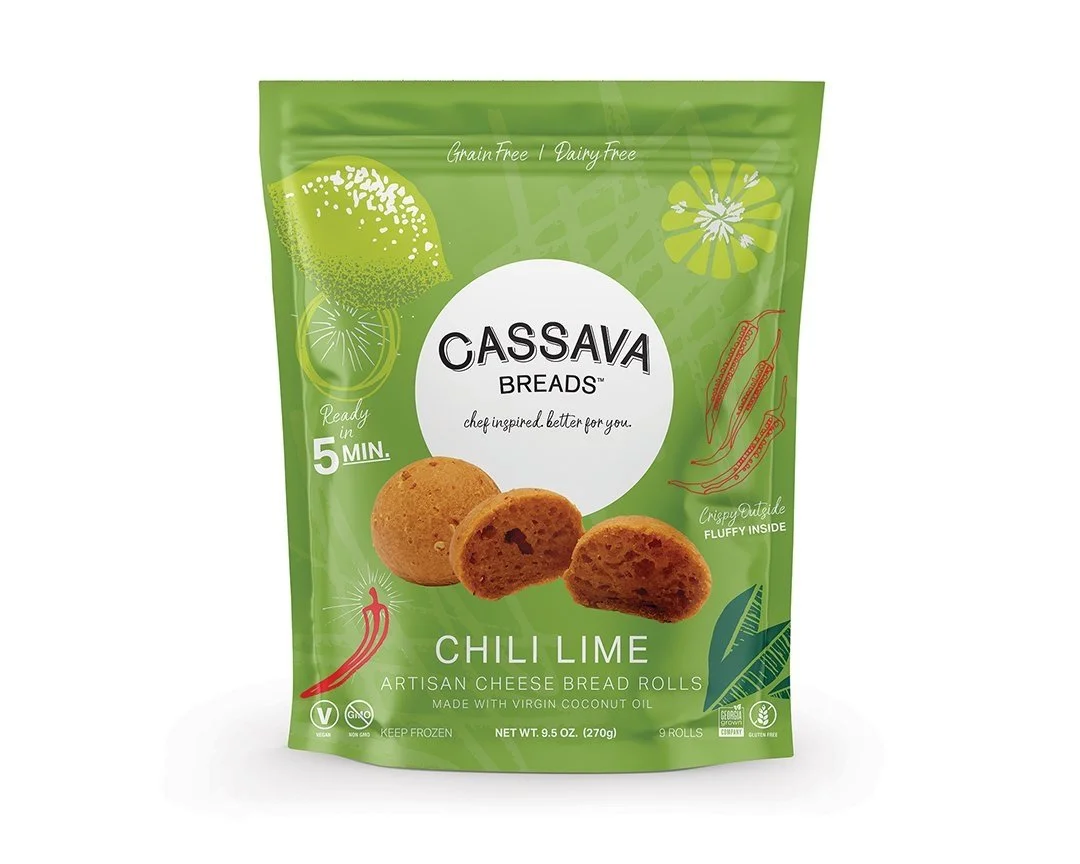In retail, the difference between someone casually browsing and someone actually buying often comes down to strategy. Whether your product lives on a boutique shelf, inside a seasonal catalog, or across an online marketplace, your marketing has to do more than just look good. It has to convert by moving your products off the shelves.
We believe retail marketing should be both refined and results-driven, with beautiful design with a purpose behind every pixel and every page. In this post, we’re sharing smart, intentional retail marketing strategies that elevate your brand across every channel, online and off.
Before someone buys your product, they buy into your story.
Your brand narrative is more than a blurb on your about page. It’s the emotional and aesthetic foundation for every retail touchpoint. Today’s customers are seeking more than just products; they’re buying meaning, alignment, and style.
Storytelling through design isn’t just creative; it’s strategic. Every catalog page, product photo and detail works together to sell more than a product. It sells perspective.
That’s why we focus so much on making sure that story shows up everywhere, from packaging to product descriptions to seasonal catalogs. HOBO’s print catalogs are a great example. In early editions, we focused heavily on product styles, but more recently, we’ve integrated on-figure photography to better convey the spirit of the brand. It’s storytelling through print, and it matters.
If your messaging feels inconsistent or unclear, that’s your cue to revisit it.
Don’t just sell the product. Sell the perspective.
Design that moves the customer. Every page, every detail, every decision made to drive engagement and action.
Pretty design is great, but if it doesn’t move the customer toward action, it’s just decoration.
Good design is a strategy made visual.
Here, every design decision is intentional. Layouts are modular and clear. Typography is thoughtfully styled to guide the eye. Product images are placed with hierarchy in mind. We consider the user experience across every detail.
HOBO’s catalogs are designed for wholesale buyers, but they’re beautiful enough to live on retail counters. They bridge utility with brand experience. Similarly, The Palm Event and The Napa Event magazines are high-end keepsakes, featuring editorial stories, sponsor ads, and beautifully designed spreads. They look elevated, but they’re also working hard: driving prestige, reinforcing brand presence, and inspiring future engagement.
Whether your audience is skimming or diving deep, good design should support both experiences seamlessly.
Your digital storefront sets the stage for every click. On Amazon.com, customers experience your brand through layout, photography and flow long before they reach the product page.
If you’re in retail, you need to know about the digital shelf.
Think of it as the online equivalent of a well-merchandised display, except your customer is seeing it through the lens of Google, Amazon, or Instagram.
A digital shelf includes your product titles, descriptions, images, reviews, and even filenames. It’s what potential buyers scan before they click.
To win on the digital shelf, your content has to be intentional:
● Use clean, zoomable images from multiple angles.
● Lead with benefit-driven copy.
● Use keywords thoughtfully (yes, filenames and alt text count).
● Include social proof such as testimonials, reviews, or ratings.
When retail marketing is done right, it blends your brand’s emotional resonance with the convenience and clarity online shoppers expect.
We’ve entered an era where AI-generated photography is more accessible than ever.
It’s not without merit; AI can be incredibly helpful when you’re short on time, budget, or seasonal imagery.
However, AI can’t replace the eye of a skilled photographer or the intuition of a creative director. Like a seasoned marketer, a photographer brings perspective, storytelling, and intentionality, capturing not just an image but a feeling.
That said, there are smart ways to use AI in your retail marketing:
Refresh visuals for seasonal campaigns.
Use placeholder content during a rebrand or pre-launch.
Test different product styling to see what resonates.
AI can support your process, but it shouldn’t be the strategy.
From coast to coast, The Palm Event and The Napa Event share one vision: refined storytelling that celebrates automotive artistry and brand heritage.
Print isn’t dead. It’s just more intentional.
We’ve helped brands like HOBO, The Home Depot, Kohl’s, The Palm Event, and The Napa Event create beautiful, functional print pieces, catalogs, event magazines, and more. These tools don’t just look nice; they hold emotional value and extend brand impact.
Even better, print and digital can work together. Add QR codes to link readers to product pages, behind-the-scenes content, or exclusive offers. Every printed piece becomes an invitation to keep engaging online.
The best retail marketing strategies don’t treat each platform as a separate experience.
They build a brand ecosystem.
Everything should feel like it comes from the same voice, vision, and value system. This is where copy, tone, visuals, and strategy converge.
At JonesHaus, when we design a catalog or launch a campaign, we’re thinking beyond the one piece. We’re thinking about how it fits into the whole story.
Audit your brand touchpoints:
Do your catalog descriptions align with your web copy?
Are your visuals consistent across platforms?
Does your tone shift between print and digital?
That cohesion is what builds trust and makes your brand feel complete.
Packaging is the first touchpoint of your brand story. From color to texture, every detail shapes how a customer feels before they even take a bite.
Retail strategy doesn’t end at the add to cart button.
Packaging is often the first tactile interaction someone has with your brand. It’s part of the story, and a powerful marketing opportunity.
Even if packaging isn’t our direct scope, we design with the end-user experience in mind. From the angle of a product photo to the copy tone on a landing page, we’re always thinking about how it will feel in the customer’s hands.
An intentional unboxing moment can become part of your customer journey and your social content, too.
The most effective retail marketing doesn’t chase trends or rely on tricks.
It’s smart, well-designed, and rooted in the story of your brand.
Whether you’re creating catalogs, reworking your product pages, or refining your digital shelf, your strategy should be as beautiful as it is intentional.
JonesHaus builds design-driven tools that help you sell with substance and style.
Ready to elevate your retail marketing? Let’s build something that looks incredible and performs even better. Contact us today to get started!






